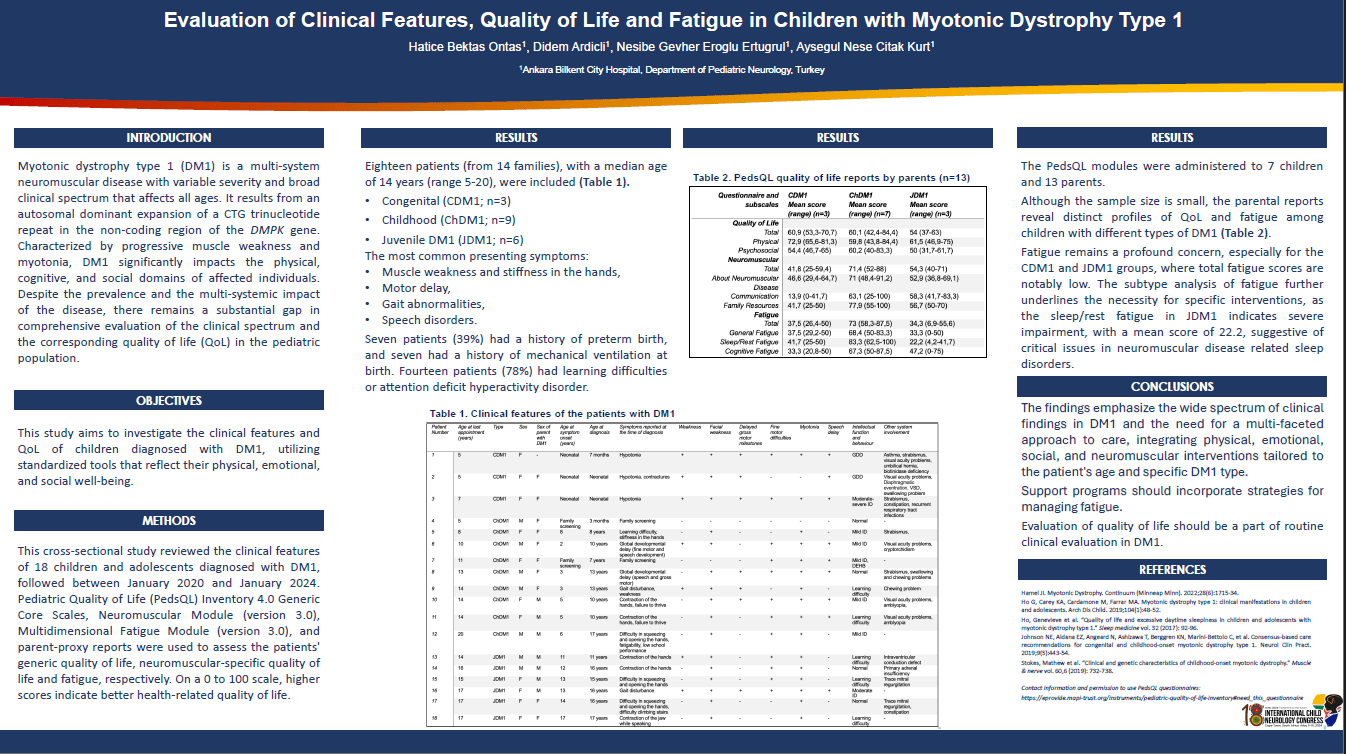Evaluation Of Clinical Features And Quality Of Life In Children Diagnosed With Myotonic Dystrophy Type 1
Objective: Myotonic Dystrophy Type 1 (DM1) is a neuromuscular disease with a wide clinical spectrum. This study aims to investigate the clinical/laboratory features and quality of life of children diagnosed with DM1.
Methods: The demographic data, age of onset, presenting symptoms, treatments and follow-up data of 17 patients diagnosed with DM1, followed between January 2020 and October 2023, were retrospectively reviewed. Pediatric Quality of Life Inventory (PedsQL) and its parent form was used to assess the patients' quality of life.
Results: Seventeen patients (from 14 families), with a median age of 13 years (IQR 5-15.5), were included. Depending on the age of onset of symptoms, patients were categorized into congenital (CDM1; n=4), childhood (n=7), and juvenile DM1 (JDM1; n=6) forms. The most common presenting symptoms were muscle weakness, motor delay, gait abnormalities, and speech disorders. All patients had at least one family member affected by the same disease. Seven patients (41%) had a history of preterm birth, and six had a history of mechanical ventilation at birth. One patient had adrenal insufficiency, and another had abnormalities in thyroid function tests. A 14-year-old patient with JDM1 had cardiac conduction defects. Ten patients (59%) had learning difficulties or attention deficit hyperactivity disorder. Two patients had swallowing disorders. Six patients had elevated serum creatine kinase levels (255-671 U/L).
Conclusion: Multidisciplinary assessment of patients with DM1 is crucial both for the early treatment of complications and improving overall health. Evaluation of quality of life should be a part of routine clinical evaluation in DM1.
Hatice Bektas Ontas
Ankara City Hospital
Turkey
Didem Ardicli
Ankara City Hospital
Turkey
Nesibe Gevher Eroglu Ertugrul
Ankara City Hospital
Turkey
Aysegul Nese Citak Kurt
Ankara City Hospital
Turkey

Hatice Bektas Ontas
Ankara City Hospital
Turkey